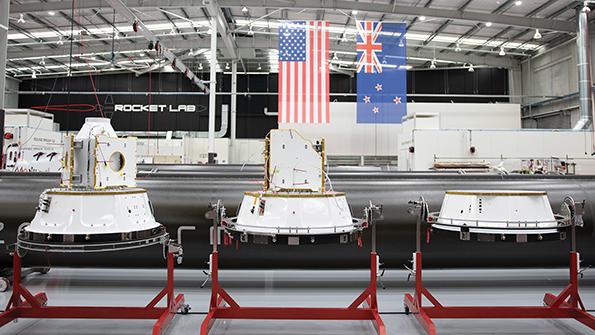
Conjunctions in space are to be avoided at almost all costs, but on Earth, space-business mashups are increasingly expected and sought after.
Mergers and acquisitions (M&A) in the space sector are making headlines, and industry executives and dealmakers see more coming for at least the rest of this year and probably a few more years. While it is unclear whether the number of deals or their values outperform other subsectors of aerospace and defense, what is certain is that as a dealmaking domain, space has captured the attention of investors and strategics alike in a sustainable way.
“Enthusiasm for high-quality space and satellite-related companies . . . remains high,” says space analyst firm Quilty Analytics in its latest monthly report.
It helps a lot that space is sexy again. Much ink has been spilled about the renaissance in space driven by billionaire-entrepreneurs racing to outdo each other with new achievements in launch or on-orbit. More importantly, Western governments—starting with the U.S.—have placed space front and center in their national security plans, and the subsequent spending is subsidizing and bolstering the whole sector.
Startup space companies raised $15.4 billion in financing in 2021, double the amount raised in 2020, with billions going to other companies than those funded by Elon Musk and Jeff Bezos. Surging venture capital investment and startups going public via special-purpose acquisition companies (SPAC) pushed the industry to a record-setting year, according to a new report by Bryce-Tech, a space market consulting firm. Some of that financial fuel was channeled in as space SPAC debuts, and M&A activity provided successful exits for investors, begetting more of the same.
Still, other drivers provide unique propellants to space M&A, which is likely to create a microburst of dealmaking in coming years—financial folks know it as a melt-up. Stakeholders and new investors do not want to miss out on what is widely expected to be a major new marketplace, referenced to be $1 trillion or more by 2040. The skyrocketing growth, from around $400 billion now, will come as humans, businesses and governments discover that they never knew they needed space-based applications—similar to the way smartphones quickly went from novelties to necessities.
At the same time, the new crop of space companies follows a significantly different business strategy than legacy space players. The new entrants are solely focused on space and seek to be both more vertically integrated and horizontally active, from launch to satellites to on-orbit services.
“Ultimately, the winners in the long term will be companies and organizations that are intertwined,” Rocket Lab founder and CEO Peter Beck told the Space Symposium this month. His company recently acquired Sol-Aero Holdings, a supplier of space solar power products and precision aerospace structures, and expects to keep acquiring.
Another example is Redwire, which like Rocket Lab last year merged with a SPAC to become publicly traded. Redwire is the result of a private-equity-driven, first-mover rollup strategy, and it continues to eye M&A as a key part of its business plan. The company this month revealed it could raise $80 million more via new stock sales to fund acquisitions of other space companies. Redwire last year bought three others—Oakman Aerospace, Deployable Space Systems and TechShot—perhaps more than any other.
“The industry is shaped like a barbell,” Redwire Chairman and CEO Peter Cannito told the Jefferies Virtual Space Summit this month. It comprises large, government-oriented prime contractors that run the gamut of aerospace and defense as well as several boutique space specialists. “We look at the ecosystem [as] an opportunity to fill the market with a pure-play space company by consolidating some of those niche companies that are dominating a specific sector,” he said.
To be sure, the proverbial clouds do loom on the horizon. “Space is growing faster than the industry can deliver right now,” Cannito said. New-space providers suffer workforce challenges, inflationary increases and other pressures afflicting the general business world. But they also face a bevy of self-invited scrutiny.
“While startup space remains well-supported by investors, future performance risks include unproven business models, uncertain customer bases and typically lengthy time horizons for space businesses to mature,” BryceTech noted. “Newly public space companies, with requirements for quarterly financial reporting, face pressure to meet financial targets and may see stock price impacts for missing them.”
Of course, that probably just means even more M&A, too, as some bow out and winners consolidate.






Comments